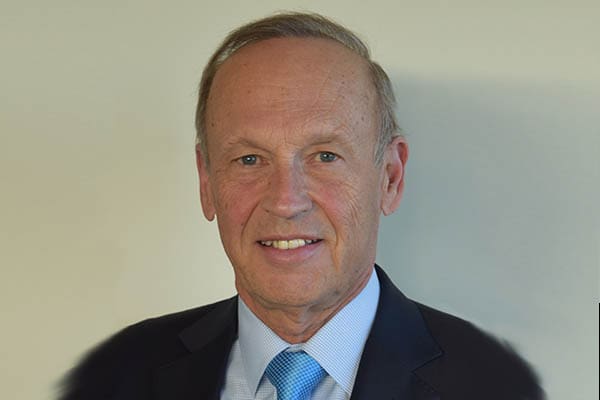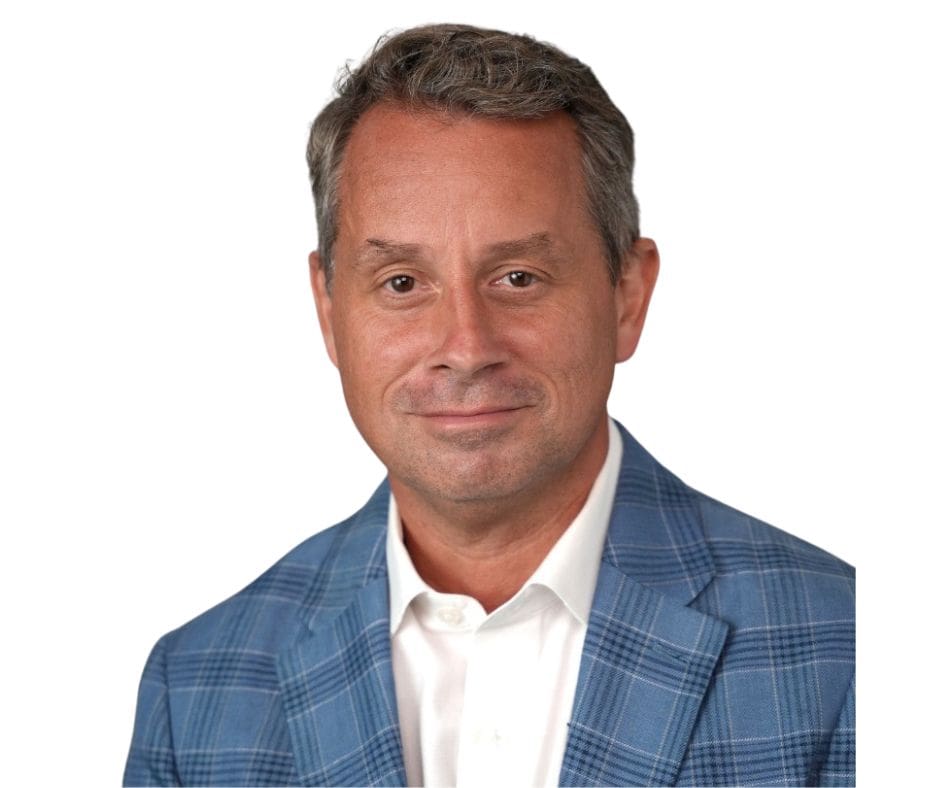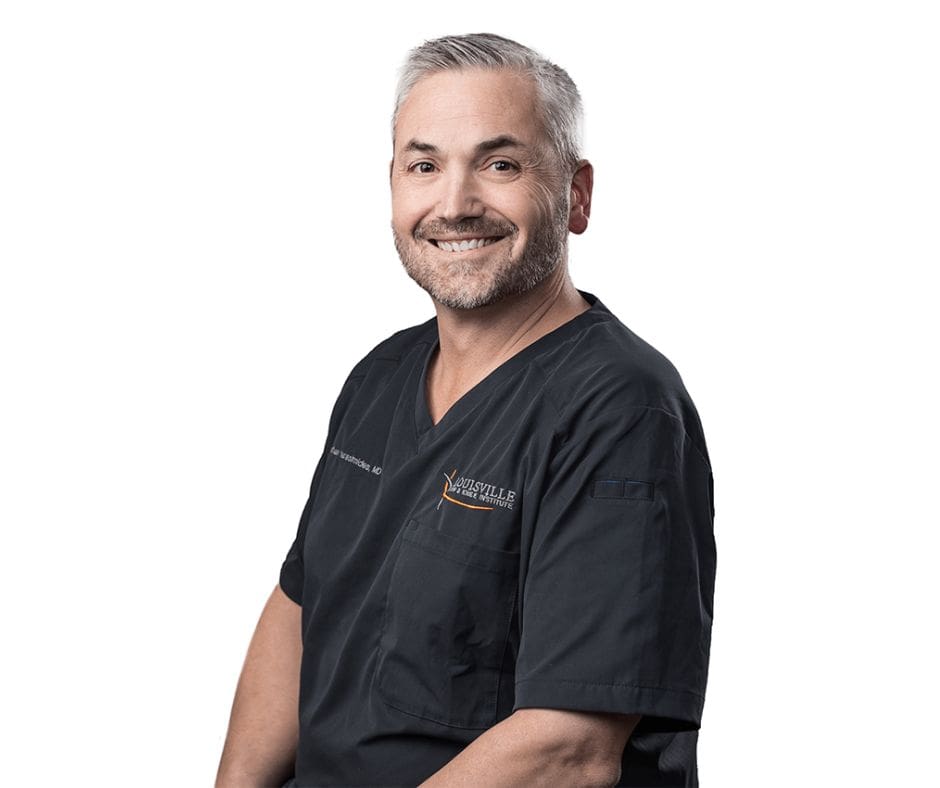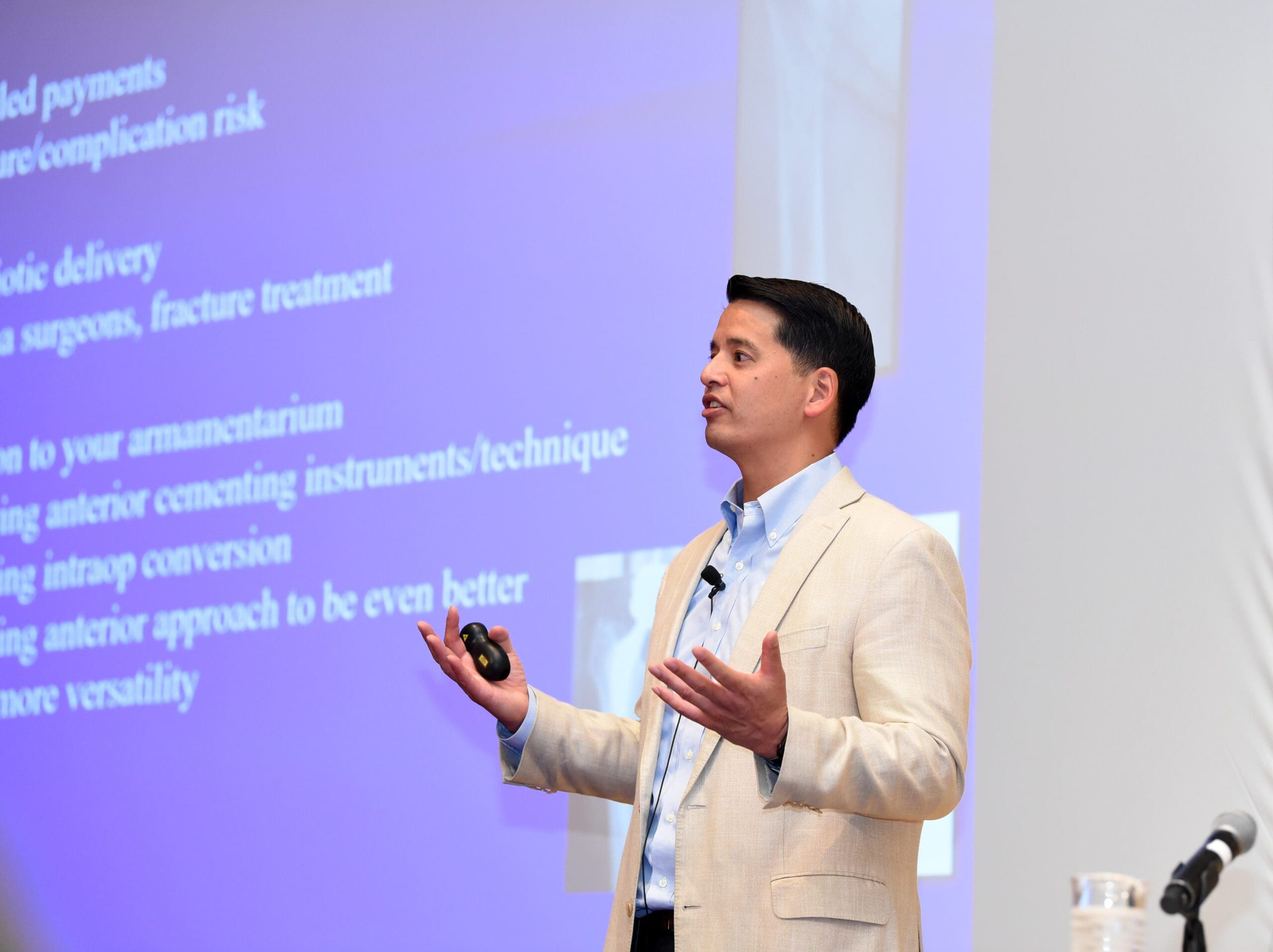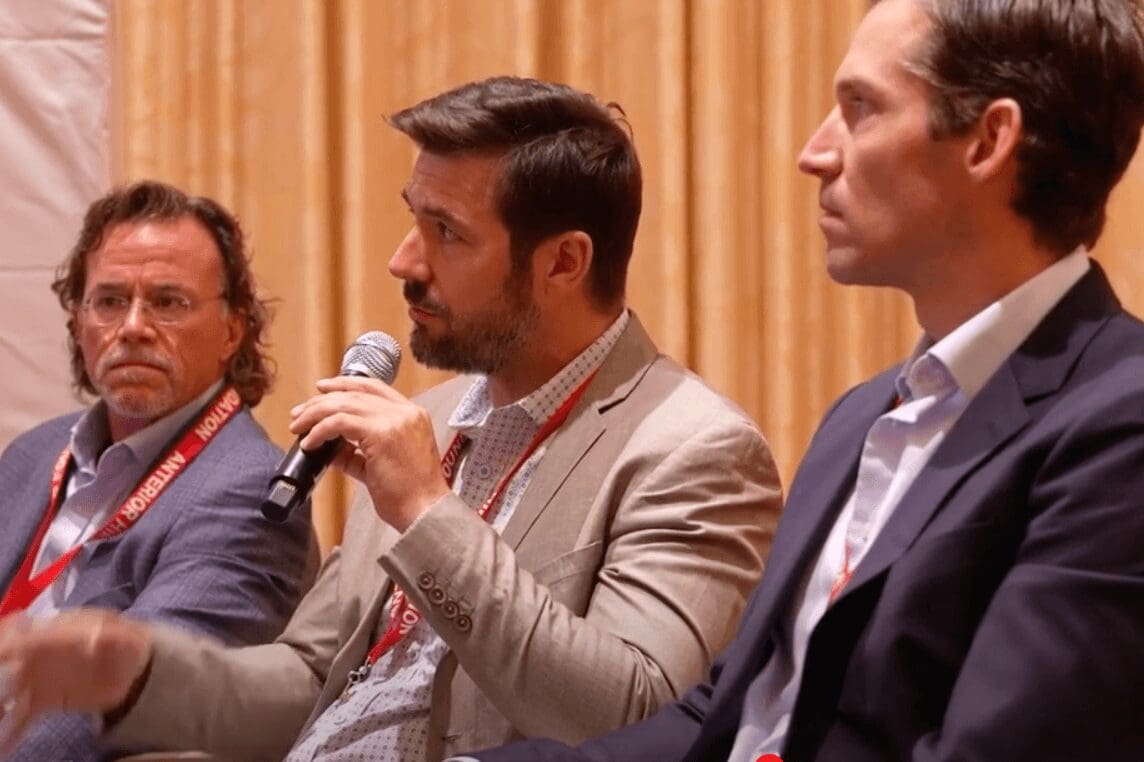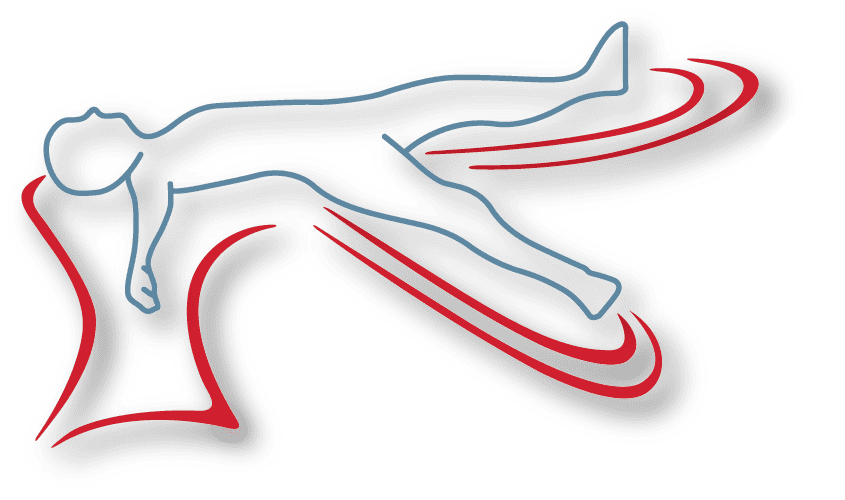Around the World with the Anterior Approach: Lessons from AHF 2025
At our 2025 Anterior Hip Foundation meeting, the “International Perspectives” session took attendees on a global tour, showcasing how the anterior approach to total hip arthroplasty is being adopted, adapted, and advanced in very different healthcare environments. From the United Kingdom’s public health realities to Brazil’s resourceful determination, from Switzerland’s data-driven transition to Mexico’s expanding influence in Latin America, these talks captured the diversity of challenges – and the common thread of passion that’s driving change.
The UK: Starting at 1% and Asking the Right Questions
Keynote: Mr. Richard Field, London
In the UK, only about 1% of total hip replacements are performed via the anterior approach, and Mr. Richard Field estimates he’s personally responsible for 25% of those cases. His keynote offered a frank look at why uptake has been slow: limited training opportunities within the National Health Service (NHS), the economic barriers to investing in specialized equipment, and the professional risks of deviating from established practice in a highly scrutinized surgical culture.
Field contrasted the UK’s data-driven registry system – which ensures excellent national outcomes – with the lived patient experiences he sees using the anterior approach: walking unassisted within hours, climbing stairs in days, and returning to sport in weeks. He challenged attendees to help answer the core question: how do you move a nation from 1% to 60% adoption?
Switzerland: From Direct Lateral Tradition to Anterior Leadership
Speaker: Dr. Darius Marti, Lucerne
In Switzerland, the direct lateral approach once dominated. Dr. Darius Marti described his personal journey transitioning to anterior, sparked by mentorship, cadaver training, and selective early case adoption. Today, the anterior approach is the most common primary THA in Switzerland, supported by growing registry evidence and fluoroscopic precision.
Marti emphasized patient-centered benefits – less pain, earlier mobilization, and faster recovery – alongside the professional satisfaction of mastering a technique that now extends even to complex revision cases. His talk was equal parts practical roadmap and personal testament to the value of change.
Brazil: Twelve Years from Secret Surgeries to National Adoption
Speaker: Dr. Alexandre Penna Torini, São Paulo
Dr. Penna’s talk was equal parts technical evolution and personal perseverance. Starting in 2012 with no dedicated table, limited retractors, and a high-volume public hospital caseload, Penna quietly refined his technique under challenging conditions – sometimes in “silent suffering.”
The turning point came with access to the Hana table, specialized instruments, and implants designed for the anterior approach. Surgical times improved, complications dropped, and patients began walking out in hours. Today, Penna performs 100% of primaries via the anterior approach, has logged over 700 cases, and is spearheading Brazil’s first nationwide anterior approach training program – complete with cadaver labs and multi-hospital adoption of the Hana table.
We have a bonus contribution from Dr. Francisco Gómez Torres who recently participated in this fascinating Livestream AHF podcast to talk about his experience in Latin America.
Mexico: Growing a Movement in Latin America
Speaker: Dr. Francisco Gómez Torres, Mexico City
Representing Latin America, Dr. Francisco Gómez Torres highlighted the rapid rise of the anterior approach in Mexico – driven by surgeon collaboration, cadaver-based education, and strong patient demand for faster recovery and improved function.
His work focuses not only on refining surgical skill but also on building the training infrastructure so that early-career surgeons can access mentorship and resources within their own countries, reducing reliance on overseas training. The result: more surgeons are adopting the anterior approach confidently, and more patients are reaping its benefits.
Shared Themes, Different Roads
While the settings and systems differ dramatically, several themes emerged across these talks:
Mentorship is pivotal – whether it’s observing a master in Paris or inviting an international expert to your hospital.
Access to equipment changes the game – from retractors to specialized tables, the right tools accelerate skill and confidence.
Registry data tells one story, patient experience tells another – and both matter in changing minds.
Education must be local and continuous – relying solely on overseas fellowships limits growth.
The AHF 2025 International Perspectives session reminded us that innovation in surgical practice isn’t just about evidence or technology – it’s about people willing to lead, adapt, and persist despite obstacles.

